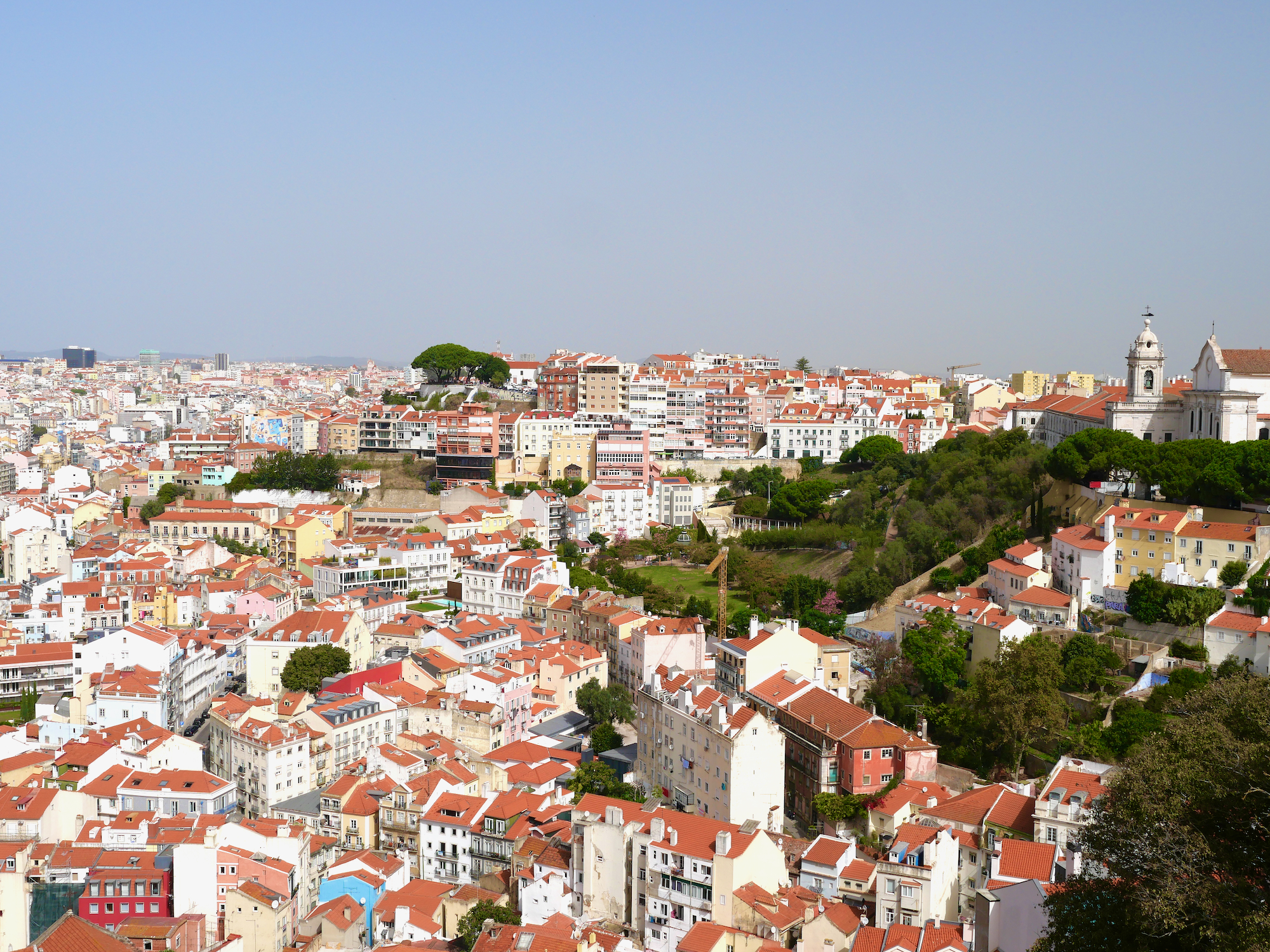My first trip to Europe was pretty easy. Not the getting there — that part was actually pretty difficult. I flew through Heathrow, but leaving Haneda the plane flew east over the Pacific Ocean, north between Kamchatka and Alaska, through the Bering Straight and then over the Arctic. In order to avoid Russian airspace four hours are tacked for the “Northern Route” that passes over northernmost Canada, Greenland, and Iceland before arriving in London more than fourteen hours after take-off. Six hours eating fish and chips in a packed (and nearly maskless) Heathrow, and I was off to Lisbon. Door-to-door it took almost thirty-three hours from my condo in Kyoto to my hotel room in Lisbon, from the eastern edge of Asia to the westernmost edge of Europe.

Lisbon is traditionally known as the “City of Seven Hills.” I arrived four days before a weeklong company retreat with a minimum of intentions: merely experience a European city. There were only a handful of locations on my sightseeing list. Honestly, I was there to walk the cobbled streets, listen to the sounds of Portuguese on café patios, feel the cool tile of the building walls, and eat the traditional salted cod pulled from the Atlantic.
Because of this lack of ambition I went with the least amount of preparation I think I ever have before entering a new country. I read just one general history book, and didn’t do any language training. I needn’t have worried. Everyone spoke English, and good English too! I was very impressed.
Lisbon is major tourist destination and digital nomad hub. My plane was full of British tourists. We flew over France and Galicia, down the Iberian coast and wheeled over the city of Lisbon, passing low over dictator-era brutalist architecture and social housing before setting down at the old airport conveniently located in the middle of the city.
The weather wasn’t particularly hot, but it was very dry. I had to constantly remind myself to hydrate as I walked vast swathes of the downtown core, around massive plazas with double roundabouts, busy with honking cars. The plaza with the statue of the Marquis of Pombal was particularly spectacular. A long strip of park goes up the hill behind him, from which you get a good view of the city. In front of him is “Liberty Avenue”, a wide boulevard reminiscent of the Champs-Élysées, which goes from the plaza down to the old town center – a perfect grid of low buildings where the Justa Lift is located – which the Marquis masterminded after the 1755 earthquake destroyed Lisbon.
The major thoroughfares of the city are connected by a network of circular plazas. These streets are wide, and many have protected bike paths where people commute on electric bikes (remember, there are lots of hills!) or tourists travelling on electric scooters. Between these large streets is a maze of small alleys and side-streets, where the buildings tend to be low, their exteriors tiled in gorgeous patterns. Cobblestones are everywhere – most sidewalks and all the older narrow streets are cobbled. The sidewalks are often not level, rolling and buckled by time and I suppose smaller earthquakes…? This uneven ground, and all the hills, makes walking the city feel like hiking everywhere you go.




It seems like every non-tiled surface is obliged to be decorated with graffiti. That and some of the mid-20th Century architecture makes the place seem run down, particularly in comparison to Japan. As a member of the PIGS I expected Portugal to be pretty cheap, which it is to some degree. Some things are very cheap, and others are not. The minimum wage is only €775 a month, and rents have been increasing with no help to the scourge of AirBnB. The corporate tax rate is just 23%, but the social insurance costs of having an employer are very high at nearly 50% (For example, to hire someone at a 50K salary would cost the company about 75K per year). I suspect these rates are part of the reason that Portugal does not have a local Amazon, and people must order from Spain.
Having Amazon or not is a weird measure of “modernity.” Otherwise Lisbon felt very modern. I could use my credit card everywhere. There were lots of apps affording the conveniences of other industrialized countries. There was an unmanned supermarket just down the street. The English-language education was superb. The laundromat was very clean and modern.
Like I said, this trip was very easy for me. It didn’t feel like “travel” in the sense that places like Cambodia, Chinese Turkestan, Iran, and India. I didn’t have much trouble understanding things or being understood. The food options were varied, including a lot of vegetarian options. In this respect I think travel life in Lisbon is easier than my daily life in Japan! It made me realize how much in common so-called “western” countries have. It was a little bit of time travel too, since basically nobody was wearing masks (compared to Japan). This Lisbon trip was more like tourism as opposed to travel (see the Philosophy of Travel) and I can see why so many people love to come here. The people are welcoming, the food is amazing, and the weather is great. I would certainly go back, if it wasn’t so far from here!
Locations Visited
The major sites I visited with some highlights.
- Marquis de Pombal statue, Eduardo VII park
- Old downtown
- Santa Justa Lift: 19th C outside elevator affording views of Lisbon
- Arco da Rua Augusta: arch and plaza by the sea. The old palace is to the west
- St George’s Castle: an old Moorish castle that was taken by seige in the second Crusade by the first king Afonso I
- Southwest Lisbon
- Pastéis de Belém: where pastel de nata was invented
- Tower of Belém: 16th C limestone tower
- Jerónimos Monastery where to the tomb of Vasco de Gama is
- Maritime Museum: many highly detailed ship models used for instruction
- Pena Palace at Sintra: this was part of a company tour. An old monastery taken over by the king in the 19th C and transformed. Up in the cool hills of Sintra, just outside of Lisbon, where many nobles had their hunting lodges to retreat to during the hot summer.


